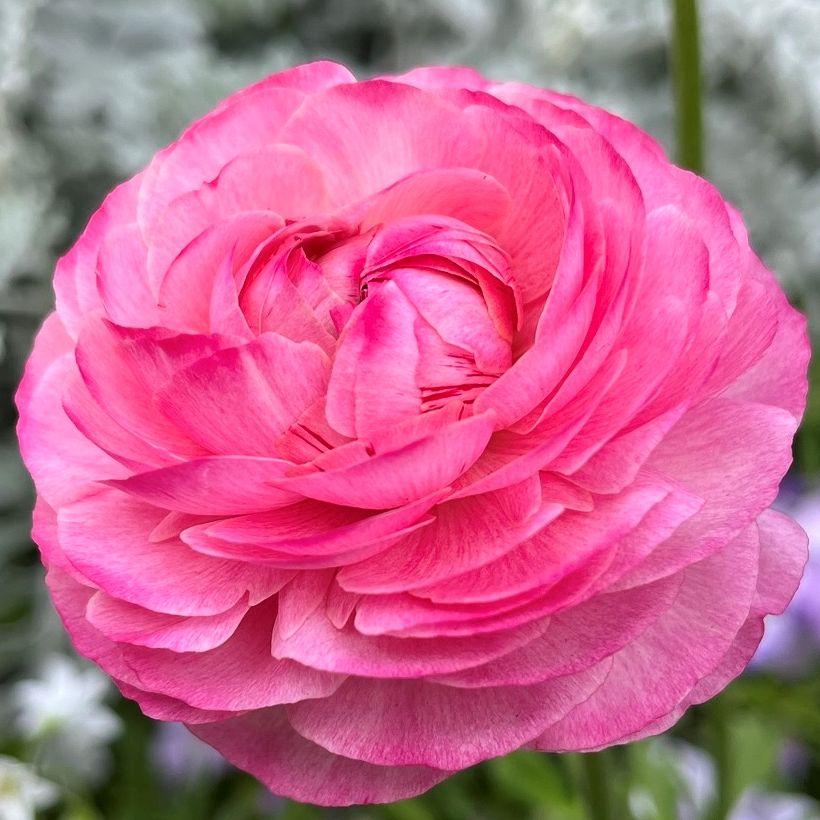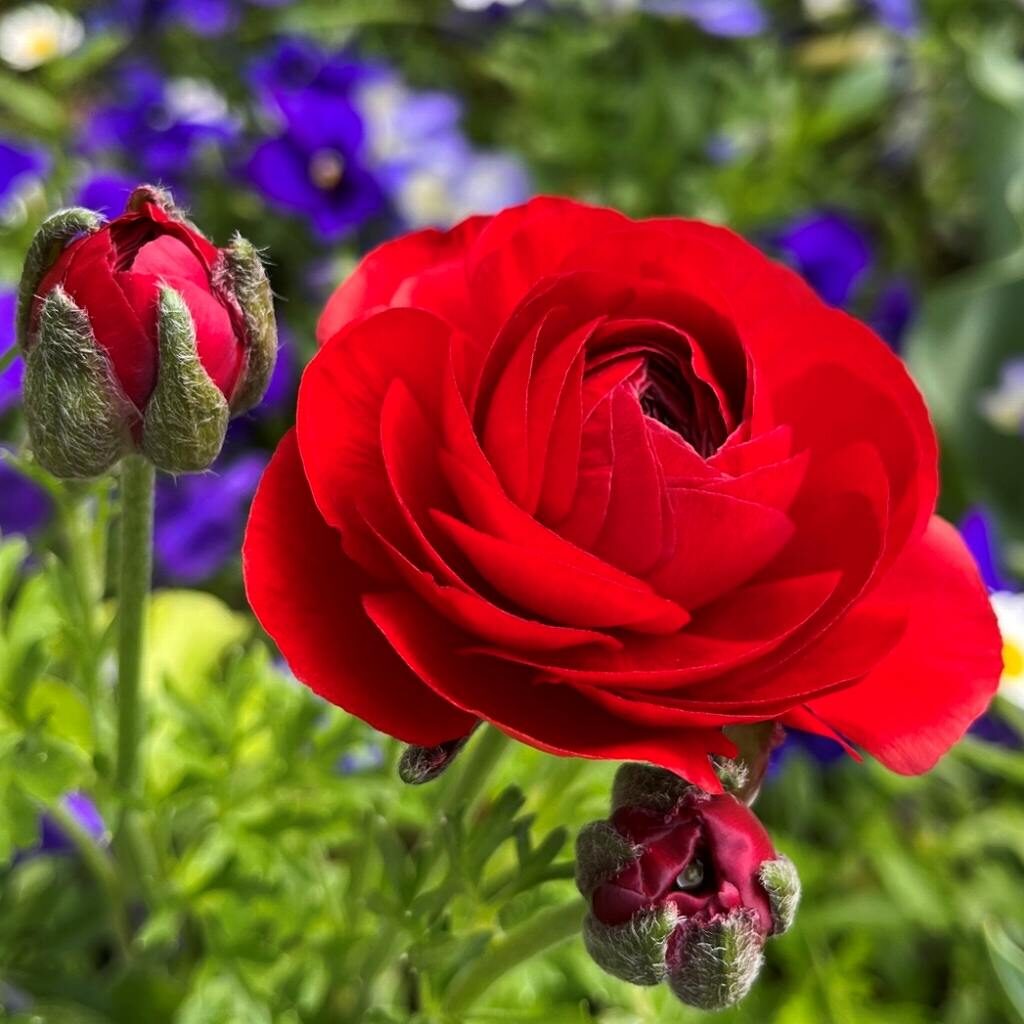ハナキンポウゲは花色に富み、花容も一重咲きから八重咲き、万重咲きまで。そのような園芸種は通常「ラナンキュラス」と呼ばれています。
Persian buttercups are rich in flower color, and the flowers range from single-flowered to double-flowered. Such cultivars are usually called “Ranunculus”.
【仮名】ハナキンポウゲ, ラナンキュラス
【和名】花金鳳花
【英名】Persian Buttercup
【学名】Ranunculus asiaticus
【誕生】01/ 20, 01/ 29, 02/ 25, 03/ 02
【開花】03, 04, 05月
【花色】White, Pink, Red, Purple, Violet, Blue, Green, Yellow, Orange



ハナキンポウゲ
ハナキンポウゲの来歴
ハナキンポウゲはキンポウゲ科の多年草です。原産地は西アジア、欧州南東部、地中海沿岸。十字軍が持ち帰った株から園芸用の改良が始まりました。英国では愛好家による育種が進み、1777年には1100品種にまで増加。現在の系統の多くは、おもにオランダで育成されたものです。
ハナキンポウゲの原種
ハナキンポウゲの属名「ラナンキュラス」は、ラテン語で「カエル」という意味。これは同属約500種の多くが、カエルの棲むような湿地に自生していたからです。その一方で、園芸用に改良されたアシアティクス種は、もともと乾燥地の斜面に自生。水はけのよいところを好みます。
ハナキンポウゲの名前
ハナキンポウゲの和名の由来は、原種が黄色の5弁花で、「金鳳花」に似ていたからです。しかし、園芸種は花色が白・桃・赤・紫・青・緑・黄・橙と多く、花容も一重咲きから八重咲き、万重咲きまで。そのため、一般的には花金鳳花でなく、「ラナンキュラス」と呼ばれています。
ハナキンポウゲの茎葉
ハナキンポウゲは葉が3つに裂けています。ラナンキュラスがラテン語で「カエル」を意味するのは葉の形がカエルの足に似ているからという説も。なお、茎葉には「ラヌンクリン」という有毒成分が含まれています。誤って皮膚に付着すると炎症を起こす恐れも。取り扱い注意です。
ハナキンポウゲの生態
ハナキンポウゲは、冬を越して春になると、深く羽状に切れ込んだ葉の間から、たくさんの茎が立ち上がります。茎や側枝の先端には幾重にも花弁の巻かれた色とりどりの花々。しかし、気温の上がる夏は地上部が枯れ、地下部の球根だけになって休眠します。秋からの再生に備えて。
Persian Buttercup
Persian buttercup is a perennial plant of the family Ranunculaceae. The place of origin is West Asia, southeastern Europe, and the Mediterranean coast. Gardening improvements began with the stock brought back by the Crusaders. Breeding by enthusiasts has progressed in the UK, increasing to 1100 varieties in 1777. Many of the current strains are mainly grown in the Netherlands.
The genus name “Ranunculus” of persian buttercup means “frog” in Latin. This is because many of the approximately 500 species of this genus grew naturally in wetlands where frogs live. On the other hand, the improved asiatics species for horticulture originally grow naturally on the slopes of drylands. They like a well-drained place.
The origin of the Japanese name of Hana Kimpouge: persian buttercup is that the original species is a yellow five-petaled flower, which resembles “Kimpouge”. However, many cultivars have white, peach, red, purple, blue, green, yellow, and orange flowers, and the flowers range from single-flowered to double-flowered. Therefore, it is generally called “Ranunculus” instead of Hana Kimpouge.
The leaves of Persian buttercup are split into three. There is also a theory that ranunculus means “frog” in Latin because the shape of the leaves resembles the legs of a frog. The foliage contains a toxic component called “ranunculin”. If it accidentally adheres to the skin, it may cause inflammation. Be careful when handling.
Persian buttercups have many stems that rise between the leaves that are deeply cut into feathers in the spring after winter. Colorful flowers with multiple petals wrapped around the tips of the main stem and side branches. However, in the summer when the temperature rises, the above-ground part withers, and only the bulbs in the underground part dormant, preparing for regeneration from autumn.


